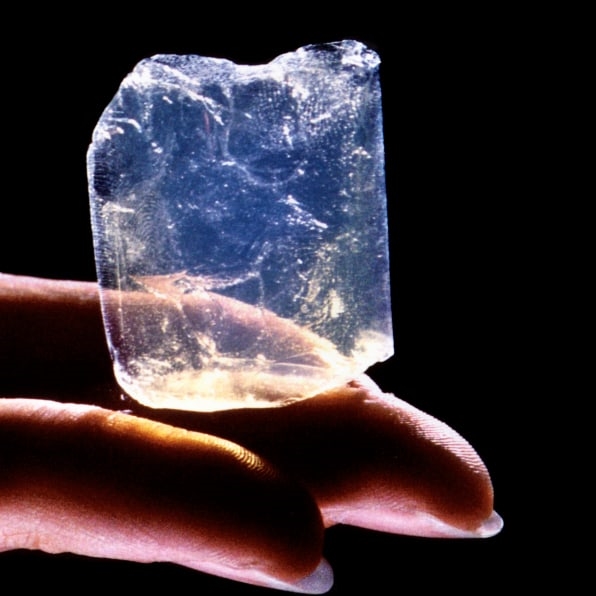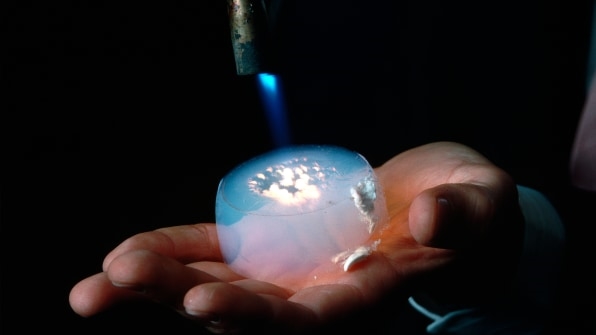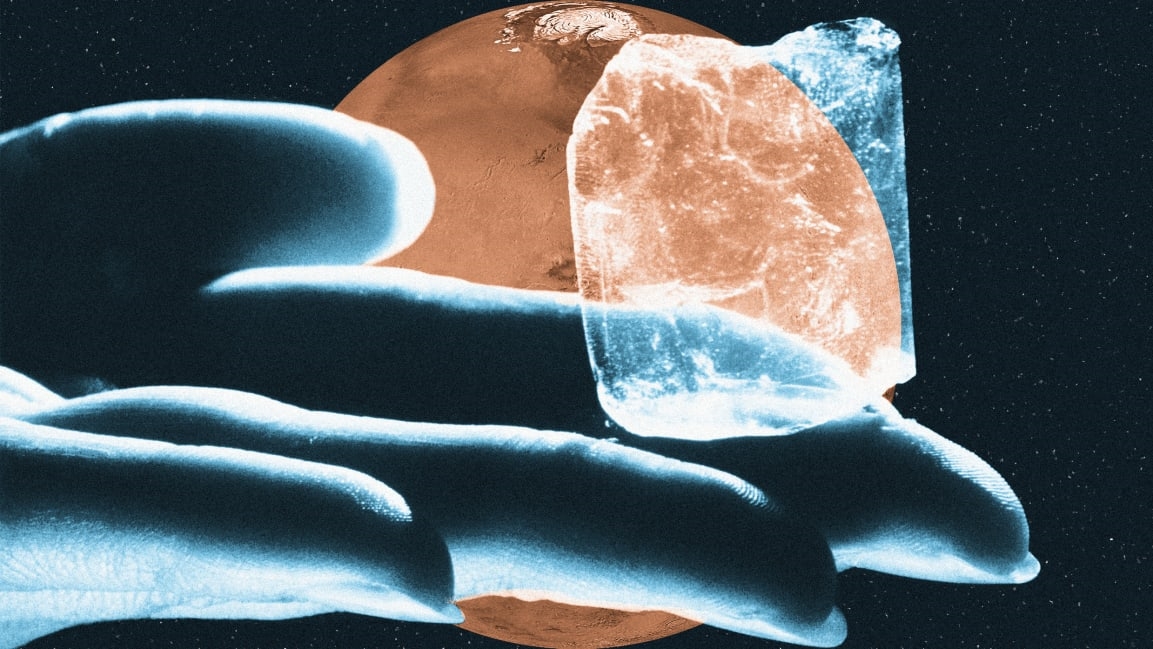Buildings made out of aerogel could help us survive on Mars “in our lifetimes”
Mars is a cold, inhospitable planet. Temperatures routinely drop to as low as -81 °F and down to -200 °F in some spots during winter. Meanwhile, the ultraviolet radiation could make humans seriously ill. So while science-fiction writers have imagined the possibility of terraforming the planet—of somehow reengineering the entire atmosphere so that it can host plants, farms, and people like Earth—scientists know that if we want to survive on Mars in the near-term, we’ll need to live and nurture life indoors.
New research published in Nature Astronomy explains how, by proving that growing food on Mars might be possible by building greenhouses out of a special material we already have on Earth: aerogel. “We’re excited about it, because we could potentially make portions of Mars habitable in our lifetimes,” says Robin Wordsworth, the Harvard researcher who led the study.
Thanks to Wordsworth’s science, we’ve learned it might be possible to build habitable structures on Mars. But intriguingly, the research could help us build in some of the most extreme environments of our planet, too.

What is aerogel?
Aerogel was first discovered in the late 1980s. It is a clear material that, just like glass, is usually made from silica, explains Wordsworth. But aerogel’s molecular structure is far looser and more dispersed than glass. In fact, aerogel is up to 99.8% air, making it one of the least dense materials we know. That also means it’s remarkably light. If you had 150 bricks made of aerogel, they’d weigh the equivalent of a single gallon of water. Think of it like a translucent styrofoam.
Aerogel’s molecular structure also makes it a natural insulator. “If you compare to ordinary glass . . . silica aerogel is 10x more effective at insulating,” says Wordsworth. It also blocks nearly all infrared radiation coming its way, while allowing near all visible light through. As Wordsworth explains, “It really is a unique material,” as no other material juggles light in this same way.
Add all of this up, and you have a perfect material for cold environments—all the benefits of a greenhouse with all of the benefits of advanced heat insulation. Plus it’s light (so it would be feasible to bring it from Earth), and it protects from UV rays, which can damage the DNA of plants as well as humans. Given all these properties, it’s feasible, at least on paper, that we could build aerogel greenhouses on Mars.
What could aerogel do on Mars?
In Wordsworth’s test, a small piece of aerogel was set up in a lab under the same light and temperature conditions we’ve found on the red planet. “The idea was to . . . do a proof of concept that it benchmarks as well as expected in theory,” he says. What they found was that the aerogel performed admirably: A mere 2.5-centimeter-thick sheet of aerogel could raise the temperature under it by up to 150 degrees Fahrenheit. That’s warm enough to melt ice on Mars—and grow plants.
So, what would these Martian buildings look like? Wordsworth notes that aerogel itself looks something like solid smoke. Looking at an aerogel ceiling would be like staring at the sky on a cloudy day. But he doesn’t get into a lot of additional detail into how aerogel architecture would work. At minimum, aerogel could be laid down in sheets right on the surface of Mars, to melt existing ice and allow algae or aquatic plants to grow underneath.
Aerogel still has some mechanical issues that limit its use. While NASA actually used some aerogel to insulate the inside of the Mars rover and other high budget insulation projects, it simply hasn’t been proven out as a significant or ubiquitous building material yet. “There are some challenges that need to be worked on further,” says Wordsworth. “It’s a fairly fragile material. For its density, it’s amazingly strong, but it fractures easily. It’s not very flexible. You might want to combine it with another material in layers.” It’s possible that aerogel could be incorporated into more forgiving plastics, too, he says.
The most effective aerogel is made in tiles for various industries today, but Wordsworth’s team is beginning to consider how smaller, disc-shaped aerogel could perform as an insulator. A disc could create a more multifaceted surface, so the aerogel could be more adaptable to various architectural shapes.

Could we use aerogel to build on Earth?
If aerogel is so wondrous, why then don’t we use it to build greenhouses here on Earth? “Good question—it’s more expensive than everyday glass, but I think it’s also true you could burn your plants,” says Wordsworth. “There might be interesting applications thinking about habitats in extreme environments like Antarctica.”
Specifically, Wordsworth would like to do “small scale experiments” with aerogel in Chile’s Atacama Desert or Antarctica’s McMurdo Dry Valleys, a pair of very cold, very dry environments on our planet that are the most Mars-like areas of our planet. “Aerogel could have potential for larger buildings situated in those extreme environments [on Earth],” he says.
In other words, aerogel isn’t an architectural wonder material yet. But as scientists like Wordsworth conduct more tests and prove out new ways to use it, don’t be surprised to see it find its niche in the most extreme environments—from Earth to Mars.
(39)



